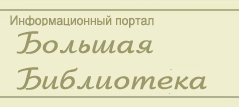Другое : Cranach, Lucas the Elder
Cranach, Lucas the Elder
Cranach, Lucas the Elder
Cranach, Lucas the Elder (1472-1553). German painter. He takes
his name from the small town of Kronach in South Germany, where he was born,
and very little is known of his life before about 1500-01, when he settled in
Vienna and started working in the humanist circles associated with the newly
founded university. His stay in Vienna was brief (he left in 1504), but in his
period there he painted some of his finest and most original works. They
include portraits, notably those of Johannes Cuspinian, a lecturer
at the university, and his wife Anna (Reinhart Collection,
Winterhur), and several religious works in which he shows a remarkable feeling
for the beauty of landscape characteristic of the Danube school. The finest
example of this manner is perhaps the Rest on the Flight into Egypt
(Staatliche Museen, Berlin), which shows the Holy Family resting in the glade
of a German pine forest. It was painted in 1504, just before Cranach went to
Wittenberg as court painter to Frederick III (the Wise), Elector of Saxony.
Cranach
remained in Wittenberg until 1550, when he followed John Frederick (the
Unfortunate), the last Saxon Elector of the Ernestine branch, into exile, in
Augsburg. During his time in Wittenberg he became extremely wealthy and one of
the city's most respected citizens, serving as burgomaster for several years.
His paintings were eagerly sought by collectors, and his busy studio often
produced numerous replicas of popular designs, particularly those in which he
showed his skill at depicting female beauty -- more than ten versions are known
of his Reclining Nymph. He excelled at erotic nudes, which
sometimes draw on Italian Renaissance models but are totally different in
spirit, and he also had a penchant for pictures of coquettish women wearing
large hats, sometimes shown as Judith or the goddesses in the Judgement
of Paris. The most innovative works of his Wittenberg period, however,
are probably his full-length portraits (The Duke and Duchess of Saxony,
Gemдldegalerie, Dresden, 1514).
Cranach
continued with his religious work, but his woodcut designs (notably those for
the first German edition of the New Testament in 1522) are generally more
interesting that his paintings in this sphere. He also painted several
portraits of Martin Luther. Despite his allegiance to the Protestant cause, he
continued to work for Catholic patrons and was a very astute businessman.
During the last years of his life Cranach was assisted by his son, Lucas the Younger (1515-86), who
carried on the tradition of the workshop and imitated his father's style so
successfully that it is often difficult to distinguish between their hands.
Список
литературы
Для подготовки данной работы
были использованы материалы с сайта http://www.ibiblio.org/louvre/paint/
|


